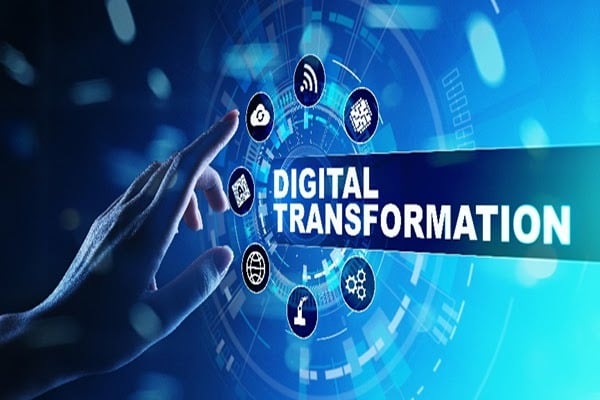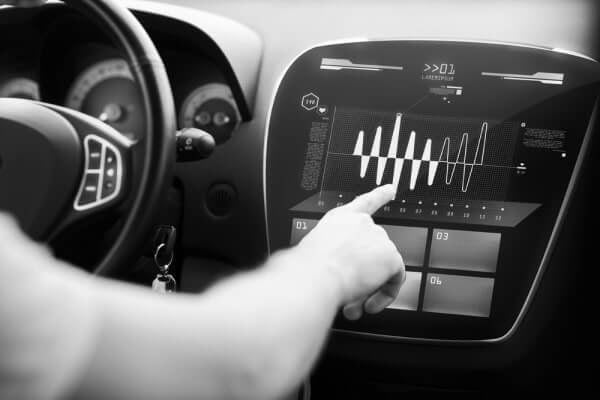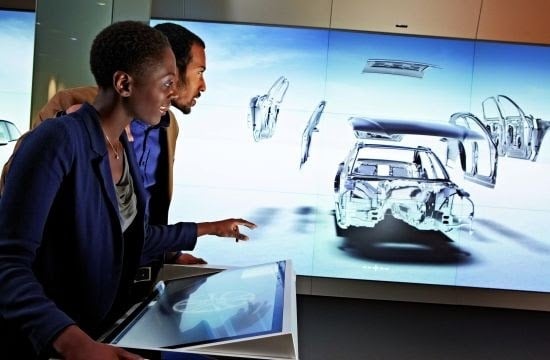The automotive industry is rapidly evolving from technological developments to digital transformation. Consumers are increasingly stringent in acquiring an advanced and better experience, which is why digital transformation in automotive is more essential. In the automotive industry, digitization is a growing investment. Industry companies realize that, just like every other digital sector, they must be transformed to meet customer demands. Today’s digital trends are very impressive in the automotive industry, which is good in light of the growing appetite for digitally improved customer experience.
Table of Contents
- What does a Digital Transformation in Automotive Industry look like?
- Examples of Digital Transformation in Automotive Industry
- Digital Transformation in Automotive Industry and its impact on customer service
- Top 7 Digital Transformation Trends in the Automotive Industry
- Challenges of Digital Transformation in Automotive Industry
- Digital Transformation and its impact on customer service
- How to Get Started with Digital Transformation in Automotive Industry
What does a Digital Transformation in Automotive Industry look like?
The automobile industry is moving faster than ever before, thanks to the introduction of new technology within the plant and novel consumer goods being introduced. Automotive manufacturers have been integrating digital technology into all aspects of their operations, from product design through procurement, production, and supply chain management, as well as sales and marketing.
A fantastic example is using digital technology to improve online customer support. For example, automobile dealerships that use eCommerce to offer their products directly to customers. Whether it’s automobiles, car components, or even accessories.
OEMs and tier suppliers can also use digital transformation to examine their processes and identify what changes they need to make in order to bring these new products to customers.
Examples of Digital Transformation in Automotive Industry
There are many great examples of digital transformation in automobile industry, ranging from product innovation to operational adjustments to customer-facing changes. The following are some examples of how automobile firms have embraced digital transformation:
- Mercedes-Benz teamed with the start-up Circular to measure emissions of climate-relevant pollutants and the quantity of secondary material used in the supply chain of battery cell manufacturers.
- Cisco and Oxbotica, a worldwide autonomous vehicle software startup, have teamed together to showcase an open roaming platform that allows autonomous fleets to securely share large amounts of data while on the road.
- BMW’s Regensburg facility used an IoT platform to remarkable effect. It enables them to minimize deployment time by 80% and quality control concerns by 5%.
- Volkswagen collaborated with developers of augmented reality applications to designate car parts with the appropriate equipment to be used in the repair process. Technicians can work more efficiently using this technology, which is known as MARTA.
- Automotive paints and supplies are historically an offline business. PBE Jobbers Warehouse, an auto body equipment wholesaler, integrated its eCommerce, CRM, and ERP systems.
Digital Transformation in Automotive Industry and its impact on customer service
Some elements of automobile buying have origins in the 20th century and until now have changed somewhat. For the selling of new vehicles, eCommerce is for dealers and consumers, but the traditional shopping experience has always been more important. Moreover, the efforts to incorporate digital instruments like iPads in showrooms have done well to enhance customer service.
In 2022, we see a revolution in the world, and clients of all kinds are more likely to go online. Sellers of all sorts, whether offline, B2C, or B2B, can try to enhance the digital experience and interact with clients on social media or the app. This trend can be accelerated.
Within the next two to five years, the automobile sector will see the creation of a distinct digital, connected supply chain. It is essential for all stakeholders in the industry to digitally manage the business by creating an intelligent and digital supply chain.
Additionally, the COVID epidemic has compelled manufacturers to examine their systems more closely in order to see how they can perform more effectively under such challenging circumstances. Production is hampered by issues like chip shortages. Demands for remote monitoring and control, as well as reporting, have increased. Fortunately for automakers, the pandemic has subsided, resulting in an increase in income for the manufacturers, since a greater number of individuals are driving rather than flying.
Automotive manufacturers are expected to raise their digital investment by up to 24% in the next several years, as they confront unprecedented competition, new product needs like electrification, and more.
>> Read more: What is Business-to-Business (B2B) eCommerce?
Top 7 Digital Transformation Trends in the Automotive Industry
Connectivity is the most important
Connectivity is the word that suits the present atmosphere perfectly. It is more than a pleasant supplement. This is a consumer-required requirement.
Nowadays, many drivers want access to applications, music, and social media accounts. They basically don’t want to be limited. Vehicle manufacturers strive to develop vehicles that allow drivers to run their companies and maintain their social lives while driving to meet their requirements and desires.
Only a couple of years ago, people dreamed of owning cars with Wi-Fi. Nowadays, the need for digital connectivity among younger car buyers makes such vehicles widely available. Manufacturers are soon aware that without such networking features it is now impossible to market or to sell vehicles.
Personalized consumer experience
Around 74% of managers think output levels in Western Europe will be below 5% by 2030, which is a 60% decrease by 2017.
The decrease would allow greater transparency and reduced costs in the supply chain. The processes of design, production, and distribution will also be speeded up. In addition, enhanced communication options would allow a factory to receive direct feedback. The efficiency changes, flexibility, and development would remove the barriers to the construction of intelligent plants.
>> Read more: Digital transformation in supply chain: Definition, Examples and Tips
Predictive maintenance based on IoT connectivity tools
This approach delivers excellent results such as early failure detection and an over 30 percent increase in maintenance.
This technology collects vehicle performance data, uploads it to the cloud, and evaluates any chance that the software and/or hardware of a vehicle will malfunction. The driver will receive notice and advice on any repair or service required to prevent injuries or accidents after processing. Basically, the need for devaluation is eliminated from predictive maintenance technology.
Advanced data security and protection
The car industry is the second most data-driven industry in the world and thus manufacturers collaborate with software development companies.
Modern intelligent cars gather information on traffic patterns, drivers, their regular locations, and more. These data are useful to engage and communicate with drivers. However, to protect driver information, connected systems must be safe. That is why manufacturers are always looking for new defense and safety developments.
Service-oriented mobility
Since moving towards service-oriented mobility modes from private vehicles, Uber has had huge success in its niche.
Vehicles become a vital part of the integrated living environment. In addition, startups like Uber reduce the huge cost of car purchasing, registration, and servicing, and provide some financial assistance.
Digitized vehicle manufacturing industry
2022 will be another year of exciting challenges and changes that bring the world closer to a technologically advanced future.
Much earlier than most people think, progress in the industry can be measured and/or used. Digital transformation in automotive also helps the world and drivers. Manufacturers still have many problems to address, but the automotive sector is changing for the better and better.
Digital transformation in the car buying process
Just a few cars are on display in London’s Audi Virtual Showrooms, but use large video screens for purchasing details.
The method to buy a car was frustrating, as the disruptive seller’s stereotype proved valid. Purchasing a new car frequently did not receive information and felt most stressed. Buyers can however check online before visiting a dealer thanks to new digital technology.
Challenges of Digital Transformation in Automotive Industry
Most programs for digital transformation in automotive industry focus on technology-driven developments and customer requirements to remain competitive. In addition, it is very competitive and associated with numerous other sectors in the automotive industry. Trends such as digital transformation in automotive manufacturing, environmental considerations, mobility as a service, and predictive computing are several advantages but also highlight multiple industry challenges. Some of them are here:
Investment
Cash protection and risk management are the key areas of emphasis in this complex economic environment. If car companies concentrate on productivity, they will focus on investments that increase the visibility of the supply chain, efficiency in sales, and customer service. They will have to concentrate on the most valuable use cases with the highest ROI for companies that invest in automotive digitalization. The biggest challenges will remain to forecast the ROI of emerging technology and to find optimal applications in the automotive sector.
A few years ago, for example, the press announced the most significant autonomous truck disruptor. But the arrival of entirely self-sufficient vehicles has been delayed since then. Deloitte’s 2020 study revealed that most consumers in Germany (67%) and Japan (61%) do not wish to pay over $500 in their cars for autonomous vehicle technology options. The story is close to the revolutionary technology for powertrains. 58% of German and 54% of US customers replied that they would not pay for alternative-fuel engines more than $500. The shaking investment climate and uncertain consumer technology demand remain some big obstacles for this technological development’s key supporters.
Resistance of change
The industry should do more to promote critical strategies for transformation. For instance, anxiety about fields remains a real problem as the range of electric cars grows. The fragmented nature of the automotive industry makes it difficult to push charging infrastructures worldwide or nationally. There is also a continuing discussion about whether it should be the duty of the OEM or the state to charge infrastructure.
Although the car aftermarket industry has long been benefiting from B2C e-commerce, intermittent digital adoption has been observed in other areas of auto e-commerce. Similar problems are faced by manufacturers. One study showed that automakers expect digital investments to rise by 24 percent in the coming years. However, due to low digital sophistication and the pace at which these changes are implemented in the industry, problems remain.
Customer-centricity
A study shows that a lack of attention for customers is an urgent problem for digital transformation in automotive. However, implementing customer-centered reform also involves carrying out corporate programs, as well as being possible at the dealer and the service level, at a national level.
For these systems to work, there should be no distinction between the experience of an individual dealer and the digital experience on all devices. The widening ranks of digital natives are responsive to these interactions and brands need to reflect how they can help enhance the overall experience of car ownership with their buyers, dealers, suppliers, and sellers.
>> Read more: 7 Digital Transformation benefits with statistics & report to prove it
Digital Transformation and its impact on customer service
Inexpensive ways to provide customer care
During every crisis, money plays a very important role. There is little difference in the digital transformation in automotive industry. Customer service networks can be automated by AI technologies that can reduce the costs for the automotive industry. The transfer to automated customer service processes guarantees 24×7 customer access and decreases dependence on the manual employee.
When they were struck by the pandemic, several businesses were already undergoing digital transformation. But Covid-19 has made us aware that the digital support and experience of customers is not simply an add-on. It must be effective and secure.
They may choose to remain linked to customers via various digital channels. The two most common ways to engage consumers are mobile apps with chat and push messages and social media.
Providing post-sales maintenance and customer satisfaction
Since this virus is highly infectious, more drivers prefer services where maintenance and repairs are not essential. Given the current state of the automotive industry, this degree of customer service or expertise is not feasible. Any vehicle to be serviced needs to have a high degree of manual involvement. None of the technically sophisticated interactions nor operations. Automotive companies need to build subscription-based virtual services in order to attain the necessary degree of streamlining.
Predictive analysis is another field where customer service can be optimized and customer loyalty secured. Through its IBM SPSS app, BMW works to please its top clients. The program earlier detects car errors and optimizes processes through Big Data Analysis.
FACTS (Field-data Analysis for Customer Satisfaction) is a core of expertise in the BMW Community, which analyzes enormous pieces of data. The findings from this huge data are used to affect the satisfaction of customers. The customer satisfaction level of other car manufacturers could be transformed by similar technologies.
Customer delight through chatbots
With the advent of chatbot production, the customer service industry has seen dramatic development. There are several companies with highly functional chatbots for mobile apps. The benefits are following:
- Personalization without disruption of the experience.
- A better experience with self-service.
- Aid in many languages.
- Aid 24 hours a day.
Chatbots have already proven very useful, but a great many improvements and development are necessary for the automotive industry to fill the void.
According to the survey carried out by automakers, nearly 70% of companies are in some phase of chatbots and over 50% have definitive plans for the implementation within the next 3 months.
How to Get Started with Digital Transformation in Automotive Industry
Businesses nowadays must stay ahead of the curve and get in front of customers before their competition. They need to figure out what their present and future needs are, and then collaborate with the best technology partner to help them achieve those goals. Additionally, they need to optimize internal procedures, retain and build partnerships, and reduce expenses.
Odoo is an open-source ERP software for any business that allows business owners to manage all functions of the company including manufacturing, inventory management, sales, net, purchase, service, repair, human resource planning, and customer relations. All Odoo functions can be performed and controlled by several users in the company’s system. Magenest has been providing Odoo service throughout the nations for varied sorts of industries. If you’re looking for an Odoo ERP implementation service or a single module in your particular demand, we’ll help you stay on your digital transformation path and get you to market faster.
Final words
The current situation is a test period for the car industry and a closer relationship between the supplier of automobile solutions is urgently needed. Digital transformation must take place at any stage in the industry. For each stakeholder, producer, supplier, employee, and customer, the digital transformation strategies listed above would gain lasting benefits.
2022 should be shocking and thrilling as consumer products are already waving in other sectors with IoT, artificial intelligence, Blockchain, and other emerging technologies. The digital transformation in automotive industry is also influenced by these developments.

















